Moisturize for a quick Cracked Heels Remedy
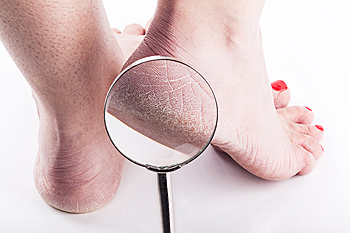 With warmer weather in our midst, many may be thinking about summer sandals and in turn, exposing their feet. Some people, however, may be wary of revealing their bare feet due to concerns about cracked heels and dry skin. If you are one of these people, consider the following tip to have your feet sandal-ready. Slather petroleum jelly onto the feet before bedtime and then put on a pair of socks. This will ensure that the jelly is fully absorbed and kept against the skin, helping to draw water to the surface and make for smooth feet in the morning. Excess petroleum jelly can be rinsed off with warm soap and water.
With warmer weather in our midst, many may be thinking about summer sandals and in turn, exposing their feet. Some people, however, may be wary of revealing their bare feet due to concerns about cracked heels and dry skin. If you are one of these people, consider the following tip to have your feet sandal-ready. Slather petroleum jelly onto the feet before bedtime and then put on a pair of socks. This will ensure that the jelly is fully absorbed and kept against the skin, helping to draw water to the surface and make for smooth feet in the morning. Excess petroleum jelly can be rinsed off with warm soap and water.
Cracked heels are unsightly and can cause further damage to your shoes and feet. If you have any concerns, contact Harvey Jacobs, DPM from Quality Foot Care Center. Our doctor can provide the care you need to keep you pain-free and on your feet.
Cracked Heels
Cracked heels appear unappealing and can make it harder for you walk around in sandals. Aside from looking unpleasant, cracked heels can also tear stockings, socks, and wear out your shoes. There are several methods to help restore a cracked heel and prevent further damage.
How Do You Get Them?
Dry skin is the number one culprit in creating cracked heels. Many athletes, walkers, joggers, and even swimmers suffer from cracked heels. Age and skin oil production play a role to getting cracked heels as well.
Promote Healing
Over the counter medicines can help, especially for those that need instant relief or who suffer from chronic dry feet.
Wear Socks – Wearing socks with medicated creams helps lock in moisture.
Moisturizers – Applying both day and night will help alleviate dryness which causes cracking.
Pumice Stones – These exfoliate and remove dead skin, which allows for smoother moisturizer application and better absorption into the skin.
Change in Diet
Eating healthy with a well-balanced diet will give the skin a fresh and radiant look. Your body responds to the kinds of food you ingest. Omega-3 fatty acids and zinc supplements can also revitalize skin tissue.
Most importantly, seek professional help if unsure how to proceed in treating cracked heels. A podiatrist will help you with any questions or information needed.
If you have any questions, please feel free to contact our office located in Somerset, NJ . We offer the newest diagnostic and treatment technologies for all your foot care needs.
Caring For Your Feet: What Not to Miss
 Since we spend a great majority of our lives on our feet, we should take utmost care of them. Experts suggest stretching the feet can reduce many issues imposed on our feet as they can suffer from a variety of ailments. The most obvious sign of a foot issue is pain. While pain without injury can be easily ignored, a lack of treatment can lead to serious chronic pain such as plantar fasciitis or arthritis. Discolored skin on the foot should not go untreated. A biopsy is usually done when the area is asymmetrical, has irregularities around the edges, and is larger than five millimeters. Numbness, swelling, and cold feet are all early symptoms of various foot issues that should not be overlooked if ongoing. Athlete’s foot and other fungal infections of the foot are often first noticed as an itchy foot. Fungal infections can be treated over-the-counter, but should be diagnosed by a professional if conditions worsen or persist.
Since we spend a great majority of our lives on our feet, we should take utmost care of them. Experts suggest stretching the feet can reduce many issues imposed on our feet as they can suffer from a variety of ailments. The most obvious sign of a foot issue is pain. While pain without injury can be easily ignored, a lack of treatment can lead to serious chronic pain such as plantar fasciitis or arthritis. Discolored skin on the foot should not go untreated. A biopsy is usually done when the area is asymmetrical, has irregularities around the edges, and is larger than five millimeters. Numbness, swelling, and cold feet are all early symptoms of various foot issues that should not be overlooked if ongoing. Athlete’s foot and other fungal infections of the foot are often first noticed as an itchy foot. Fungal infections can be treated over-the-counter, but should be diagnosed by a professional if conditions worsen or persist.
Everyday foot care is very important to prevent infection and other foot ailments. If you need your feet checked, contact Harvey Jacobs, DPM from Quality Foot Care Center. Our doctor can provide the care you need to keep you pain-free and on your feet.
Everyday Foot Care
Often, people take care of their bodies, face and hair more so than they do for their feet. But the feet are a very important aspect of our bodies, and one that we should pay more attention to. Without our feet, we would not be able to perform most daily tasks.
It is best to check your feet regularly to make sure there are no new bruises or cuts that you may not have noticed before. For dry feet, moisturizer can easily be a remedy and can be applied as often as necessary to the affected areas. Wearing shoes that fit well can also help you maintain good foot health, as well as making it easier to walk and do daily activities without the stress or pain of ill-fitting shoes, high heels, or even flip flops. Wearing clean socks with closed shoes is important to ensure that sweat and bacteria do not accumulate within the shoe. Clean socks help to prevent Athlete’s foot, fungi problems, bad odors, and can absorb sweat.
If you have any questions please feel free to contact our office located in Somerset, NJ . We offer the newest diagnostic and treatment technologies for all your foot and ankle needs.
Living with Flat Feet
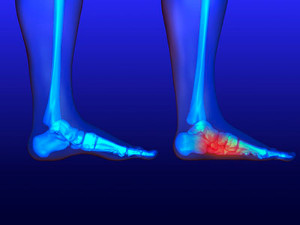 “About 20-30% of the population suffers from fallen arches in one or both feet.” Flat feet can be very problematic for runners. Those with flat feet have to be careful while training, stretching, and selecting running shoes. They have to know and pay attention to the warning signs of potential foot problems. Those with flat feet may also have a condition called plantar fasciitis, however stretching is the best way to prevent onset of this. Having shoes that fit properly is important for everyone, but it is especially important for those who have flat feet.
“About 20-30% of the population suffers from fallen arches in one or both feet.” Flat feet can be very problematic for runners. Those with flat feet have to be careful while training, stretching, and selecting running shoes. They have to know and pay attention to the warning signs of potential foot problems. Those with flat feet may also have a condition called plantar fasciitis, however stretching is the best way to prevent onset of this. Having shoes that fit properly is important for everyone, but it is especially important for those who have flat feet.
Flatfoot is a condition many people suffer from. If you have flat feet, contact Harvey Jacobs, DPM from Quality Foot Care Center. Our doctor will treat your foot and ankle needs.
What Are Flat Feet?
Flatfoot is a condition in which the arch of the foot is depressed and the sole of the foot is almost completely in contact with the ground. About 20-30% of the population generally has flat feet because their arches never formed during growth.
Conditions & Problems:
Having flat feet makes it difficult to run or walk because of the stress placed on the ankles.
Alignment – The general alignment of your legs can be disrupted, because the ankles move inward which can cause major discomfort.
Knees – If you have complications with your knees, flat feet can be a contributor to arthritis in that area.
Symptoms
- Pain around the heel or arch area
- Trouble standing on the tip toe
- Swelling around the inside of the ankle
- Flat look to one or both feet
- Having your shoes feel uneven when worn
Treatment
If you are experiencing pain and stress on the foot you may weaken the posterior tibial tendon, which runs around the inside of the ankle.
If you have any questions please feel free to contact our office located in Somerset, NJ . We offer the newest diagnostic and treatment technologies for all your foot and ankle needs.
Painful Plantar Fasciitis
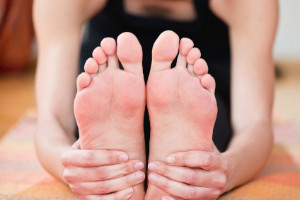 Approximately two million people each year are diagnosed with plantar fasciitis. The plantar fascia is what supports the arch of the foot. It may become inflamed and painful when it is overused or torn. Plantar fasciitis is one of the most common foot conditions in the world and there are various forms of treatment. The condition can be treated with physical therapy, stretching, placing the foot in a boot, ice, and rest. If none of these treatment options are successful, surgery can be performed in order to create a cut in the fascia, which will relieve tension.
Approximately two million people each year are diagnosed with plantar fasciitis. The plantar fascia is what supports the arch of the foot. It may become inflamed and painful when it is overused or torn. Plantar fasciitis is one of the most common foot conditions in the world and there are various forms of treatment. The condition can be treated with physical therapy, stretching, placing the foot in a boot, ice, and rest. If none of these treatment options are successful, surgery can be performed in order to create a cut in the fascia, which will relieve tension.
Plantar fasciitis can be very painful and inconvenient. If you are experiencing heel pain or symptoms of plantar fasciitis, contact Harvey Jacobs, DPM from Quality Foot Care Center. Our doctor can provide the care you need to keep you pain-free and on your feet.
What Is Plantar Fasciitis?
Plantar fasciitis is the inflammation of the thick band of tissue that runs along the bottom of your foot, known as the plantar fascia, and causes mild to severe heel pain.
What Causes Plantar Fasciitis?
- Excessive running
- Non-supportive shoes
- Overpronation
- Repeated stretching and tearing of the plantar fascia
How Can It Be Treated?
- Conservative measures – anti-inflammatories, ice packs, stretching exercises, physical therapy, orthotic devices
- Shockwave therapy – sound waves are sent to the affected area to facilitate healing and are usually used for chronic cases of plantar fasciitis
- Surgery – usually only used as a last resort when all else fails. The plantar fascia can be surgically detached from the heel
While very treatable, plantar fasciitis is definitely not something that should be ignored. Especially in severe cases, speaking to your doctor right away is highly recommended to avoid complications and severe heel pain. Your podiatrist can work with you to provide the appropriate treatment options tailored to your condition.
If you have any questions please feel free to contact our office located in Somerset, NJ . We offer the newest diagnostic and treatment technologies for all your foot and ankle needs.
Hammertoe Havoc
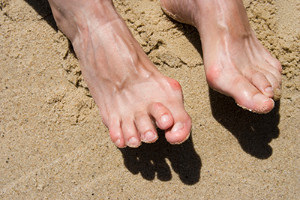 Hammertoe is caused when there is a muscle and ligament imbalance around the toe joint. This causes the middle joint of the toe to bend and become stuck in this position . Many people with hammertoe complain about rubbing and irritation at the top of the bent toe. Toes that tend to unnaturally curl, such as the baby toe, are also considered hammertoes. “Flexible” and “Rigid” are the two main types of hammertoes. If the toe can still be moved around, it is considered a flexible hammertoe. Hammertoes that don’t allow for any toe movement are classified as rigid hammertoes.
Hammertoe is caused when there is a muscle and ligament imbalance around the toe joint. This causes the middle joint of the toe to bend and become stuck in this position . Many people with hammertoe complain about rubbing and irritation at the top of the bent toe. Toes that tend to unnaturally curl, such as the baby toe, are also considered hammertoes. “Flexible” and “Rigid” are the two main types of hammertoes. If the toe can still be moved around, it is considered a flexible hammertoe. Hammertoes that don’t allow for any toe movement are classified as rigid hammertoes.
Hammertoe
Hammertoes can be a painful condition to live with. For more information, contact Harvey Jacobs, DPM from Quality Foot Care Center. Our doctor will answer any of your foot- and ankle-related questions.
Hammertoe is a foot deformity that affects the joints of the second, third, fourth, or fifth toes of your feet. It is a painful foot condition in which these toes curl and arch up, which can often lead to pain when wearing footwear.
Symptoms
- Pain in the affected toes
- Development of corns or calluses due to friction
- Inflammation
- Redness
- Contracture of the toes
Causes
Genetics – People who are genetically predisposed to hammertoe are often more susceptible
Arthritis – Because arthritis affects the joints in your toes, further deformities stemming from arthritis can occur
Trauma – Direct trauma to the toes could potentially lead to hammertoe
Ill-fitting shoes – Undue pressure on the front of the toes from ill-fitting shoes can potentially lead to the development of hammertoe
Treatment
Orthotics – Custom made inserts can be used to help relieve pressure placed on the toes and therefore relieve some of the pain associated with it
Medications – Oral medications such as anti-inflammatories or NSAIDs could be used to treat the pain and inflammation hammertoes causes. Injections of corticosteroids are also sometimes used
Surgery – In more severe cases where the hammertoes have become more rigid, foot surgery is a potential option
If you have any questions please contact our office located in Somerset, NJ . We offer the newest diagnostic and treatment technologies for all your foot and ankle needs.
Indians’ Outfielder Placed On Disabled List with Sprained Ankle
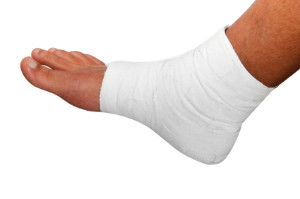 Michael Brantley of the Cleveland Indians was recently placed on the disabled list due to a sprained ankle. The outfielder suffered the injury earlier this season during a game against Kansas City and has not fully recovered from its effects. Brantley had already missed five games on paternity leave, but that wasn’t enough time for him to fully recover from the ankle injury. Fortunately, the Indians consider this to be a minor setback as Brantley is expected to be back within a week or so. While Brantley is out, the team is expected to give extra at-bats to Daniel Robertson and Austin Jackson.
Michael Brantley of the Cleveland Indians was recently placed on the disabled list due to a sprained ankle. The outfielder suffered the injury earlier this season during a game against Kansas City and has not fully recovered from its effects. Brantley had already missed five games on paternity leave, but that wasn’t enough time for him to fully recover from the ankle injury. Fortunately, the Indians consider this to be a minor setback as Brantley is expected to be back within a week or so. While Brantley is out, the team is expected to give extra at-bats to Daniel Robertson and Austin Jackson.
Ankle sprains are common but need immediate attention. If you need your feet checked, contact Harvey Jacobs, DPM from Quality Foot Care Center. Our doctor can provide the care you need to keep you pain-free and on your feet.
How Does an Ankle Sprain Occur?
Ankle sprains take place when the ligaments in your ankle are torn or stretched beyond their limits. There are multiple ways that the ankle can become injured, including twisting or rolling over onto your ankle, putting undue stress on it, or causing trauma to the ankle itself.
What Are the Symptoms?
- Mild to moderate bruising
- Limited mobility
- Swelling
- Discoloration of the skin (depending on severity)
Preventing a Sprain
- Wearing appropriate shoes for the occasion
- Stretching before exercises and sports
- Knowing your limits
Treatment of a Sprain
Treatment of a sprain depends on the severity. Many times, people are told to rest and remain off their feet completely, while others are given an air cast. If the sprain is very severe, surgery may be required.
If you have suffered an ankle sprain previously, you may want to consider additional support such as a brace and regular exercises to strengthen the ankle.
If you have any questions please feel free to contact our office located in Somerset, NJ . We offer the newest diagnostic and treatment technologies for all your foot and ankle needs.
Falcon’s Julio Jones Undergoes Foot Surgery
 Julio Jones of the Atlanta Falcons has had several foot injuries throughout his career. He suffered two different foot fractures in 2011 and 2013, and is currently recovering from a bunion removal surgery that he had in March. Jones is three months into his rehabilitation timetable, and hopes to be ready by training camp in July. In regards to his injury Jones stated, “It was good just to be back out on the grass and just testing it out, I felt great. Just working my way into it; just easing into it.”
Julio Jones of the Atlanta Falcons has had several foot injuries throughout his career. He suffered two different foot fractures in 2011 and 2013, and is currently recovering from a bunion removal surgery that he had in March. Jones is three months into his rehabilitation timetable, and hopes to be ready by training camp in July. In regards to his injury Jones stated, “It was good just to be back out on the grass and just testing it out, I felt great. Just working my way into it; just easing into it.”
Foot surgery is sometimes necessary to treat a foot ailment. To learn more, contact Harvey Jacobs, DPM of Quality Foot Care Center. Our doctor will assist you with all of your foot and ankle needs.
When Is Surgery Necessary?
Foot and ankle surgery is generally reserved for cases in which less invasive, conservative procedures have failed to alleviate the problem. Some of the cases in which surgery may be necessary include:
- Removing foot deformities like bunions and bone spurs
- Severe arthritis that has caused bone issues
- Cosmetic reconstruction
What Types of Surgery Are There?
The type of surgery you receive will depend on the nature of the problem you have. Some of the possible surgeries include:
- Bunionectomy for painful bunions
- Surgical fusion for realignment of bones
- Neuropathy decompression surgery to treat nerve damage
Benefits of Surgery
Although surgery is usually a last resort, it can provide more complete pain relief compared to non-surgical methods and may allow you to finally resume full activity.
Surgical techniques have also become increasingly sophisticated. Techniques like endoscopic surgery allow for smaller incisions and faster recovery times.
If you have any questions please feel free to contact our office located in Somerset, NJ . We offer the newest diagnostic and treatment technologies for all your foot and ankle needs.
Dealing with Plantar Warts
 Plantar warts are caused by the human papillomavirus (HPV). This virus thrives in warm, damp environments such as gym showers or other public facilities. In special cases, untreated plantar warts may develop into methicillin-resistant staphylococcus aureus (MRSA). Although sometimes plantar warts may go away on their own, if they are chronic or become painful you should consult with a podiatrist to go over treatment options.
Plantar warts are caused by the human papillomavirus (HPV). This virus thrives in warm, damp environments such as gym showers or other public facilities. In special cases, untreated plantar warts may develop into methicillin-resistant staphylococcus aureus (MRSA). Although sometimes plantar warts may go away on their own, if they are chronic or become painful you should consult with a podiatrist to go over treatment options.
Plantar warts can be very uncomfortable. If you need your feet checked, contact Harvey Jacobs, DPM from Quality Foot Care Center. Our doctor will assist you with all of your foot and ankle needs.
About Plantar Warts
Plantar warts are the result of HPV, or human papillomavirus, getting into open wounds on the feet. They are mostly found on the heels or balls of the feet.
While plantar warts are generally harmless, those experiencing excessive pain or those suffering from diabetes or a compromised immune system require immediate medical care. Plantar warts are easily diagnosed, usually through scraping off a bit of rough skin or by getting a biopsy.
Symptoms
- Lesions on the bottom of your feet, usually rough and grainy
- Hard or thick callused spots
- Wart seeds, which are small clotted blood vessels that look like little black spots
- Pain, discomfort, or tenderness of your feet when walking or standing
Treatment
- Freezing
- Electric tool removal
- Laser Treatment
- Topical Creams (prescription only)
- Over-the-counter medications
To help prevent developing plantar warts, avoid walking barefoot over abrasive surfaces that can cause cuts or wounds for HPV to get into. Avoiding direct contact with other warts, as well as not picking or rubbing existing warts, can help prevent the further spread of plantar warts. However, if you think you have developed plantar warts, speak to your podiatrist. He or she can diagnose the warts on your feet and recommend the appropriate treatment options.
If you have any questions please feel free to contact our office located in Somerset, NJ . We offer the newest diagnostic and treatment technologies for all your foot and ankle needs.
What Causes Heel Pain?
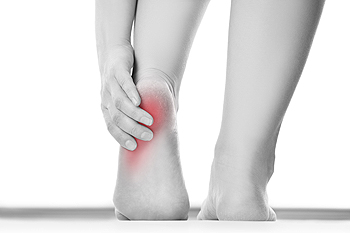 Many runners often complain about feeling pain in their heel, and the pain is usually caused by conditions such as plantar fasciitis and Achilles tendonitis. A 2012 study revealed that 1 in 10 people will develop plantar fasciitis in his or her lifetime, and many of these people will belong to the athletic community. If you are suffering from heel pain, it is important that you understand why it is happening so that you know how to treat it. One of the most common causes for heel pain is wearing old, worn-out running shoes. You should always make sure to replace your sneakers after every 500 miles of running. Another cause may be failing to stretch before you work out. It is crucial that you stretch your feet if you want to prevent and relieve any sort of heel pain.
Many runners often complain about feeling pain in their heel, and the pain is usually caused by conditions such as plantar fasciitis and Achilles tendonitis. A 2012 study revealed that 1 in 10 people will develop plantar fasciitis in his or her lifetime, and many of these people will belong to the athletic community. If you are suffering from heel pain, it is important that you understand why it is happening so that you know how to treat it. One of the most common causes for heel pain is wearing old, worn-out running shoes. You should always make sure to replace your sneakers after every 500 miles of running. Another cause may be failing to stretch before you work out. It is crucial that you stretch your feet if you want to prevent and relieve any sort of heel pain.
Many people suffer from bouts of heel pain. For more information, contact Harvey Jacobs, DPM of Quality Foot Care Center. Our doctor can provide the care you need to keep you pain-free and on your feet.
Causes of Heel Pain
Heel pain is often associated with plantar fasciitis. The plantar fascia is a band of tissues that extends along the bottom of the foot. A rip or tear in this ligament can cause inflammation of the tissue.
Achilles tendonitis is another cause of heel pain. Inflammation of the Achilles tendon will cause pain from fractures and muscle tearing. Lack of flexibility is also another symptom.
Heel spurs are another cause of pain. When the tissues of the plantar fascia undergo a great deal of stress, it can lead to ligament separation from the heel bone, causing heel spurs.
Why Might Heel Pain Occur?
- Wearing ill-fitting shoes
- Wearing non-supportive shoes
- Weight change
- Excessive running
Treatments
Heel pain should be treated as soon as possible for immediate results. Keeping your feet in a stress-free environment will help. If you suffer from Achilles tendonitis or plantar fasciitis, applying ice will reduce the swelling. Stretching before an exercise like running will help the muscles. Using all these tips will help make heel pain a condition of the past.
If you have any questions please contact our office located in Somerset, NJ . We offer the newest diagnostic and treatment technologies for all your foot and ankle needs.
The Connection Between Obesity, RA, and the Health of Your Feet
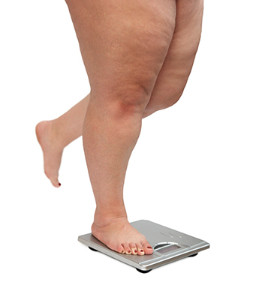 According to the World Health Organization (WHO), over 2.8 million people die each year due to complications resulting from obesity. Researchers at the University Hospital in Denmark conducted a study that showed obesity was linked to an increased risk of rheumatoid arthritis development in women. This is largely attributed to the fact that obesity disrupts bone health and development. Rheumatoid arthritis is a condition that affects the joints in the feet, hands, and knees. While there isn’t a cure for the inflammatory disorder, the best way to treat it is by use of medication and physical therapy.
According to the World Health Organization (WHO), over 2.8 million people die each year due to complications resulting from obesity. Researchers at the University Hospital in Denmark conducted a study that showed obesity was linked to an increased risk of rheumatoid arthritis development in women. This is largely attributed to the fact that obesity disrupts bone health and development. Rheumatoid arthritis is a condition that affects the joints in the feet, hands, and knees. While there isn’t a cure for the inflammatory disorder, the best way to treat it is by use of medication and physical therapy.
Obesity has become very problematic at this point in time and can have extremely negative effects on the feet. If you’re an obese individual and are concerned about your feet, contact Harvey Jacobs, DPM from Quality Foot Care Center. Our doctor can provide the care you need to keep you pain-free and on your feet.
Obesity and Your Feet
Since your feet are what support your entire weight when standing, any additional weight can result in pain and swelling. Being overweight is one of the main contributors to foot complications.
Problems & Complications
Extra Weight – Even putting on just a few extra pounds could create serious complications for your feet. As your weight increases, your balance and body will shift, creating new stresses on your feet. This uneven weight distribution can cause pain, even while doing the simplest tasks, such as walking.
Diabetes – People who are overweight are at serious risk of developing type-2 diabetes, which has a drastic impact on the health of your feet. As you get older, your diabetes might worsen, which could lead to loss of feeling in your feet, sores, and bruises. You could also become more prone to various infections.
Plantar fasciitis – Pressure and stress that is placed on muscles, joints, and tendons can trigger plantar fasciitis, which is an inflammation of tissue that forms along the bottom of the foot.
If you have any questions please feel free to contact our office located in Somerset, NJ . We offer the newest diagnostic and treatment technologies for all your foot and ankle needs.
More...
How to Maintain Healthy Feet
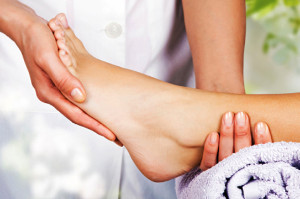 As you grow older, you may start to experience more problems with your feet. When dealing with your feet, it is crucial that you do not ignore any persistent pain you are feeling. You should perform daily foot inspections to ensure that there are no abnormalities. A helpful tip is to make sure you are wearing shoes that fit properly and are not worn out. When you go shoe shopping, you should go later in the day when the feet are at their largest. It is also important that you avoid wearing the same pair of shoes everyday. Lastly, avoid walking around barefoot, since doing so may make you more prone to infection and injury.
As you grow older, you may start to experience more problems with your feet. When dealing with your feet, it is crucial that you do not ignore any persistent pain you are feeling. You should perform daily foot inspections to ensure that there are no abnormalities. A helpful tip is to make sure you are wearing shoes that fit properly and are not worn out. When you go shoe shopping, you should go later in the day when the feet are at their largest. It is also important that you avoid wearing the same pair of shoes everyday. Lastly, avoid walking around barefoot, since doing so may make you more prone to infection and injury.
Everyday foot care is very important to prevent infection and other foot ailments. If you need your feet checked, contact Harvey Jacobs, DPM from Quality Foot Care Center. Our doctor can provide the care you need to keep you pain-free and on your feet.
Everyday Foot Care
Often, people take care of their bodies, face and hair more so than they do for their feet. But the feet are a very important aspect of our bodies, and one that we should pay more attention to. Without our feet, we would not be able to perform most daily tasks.
It is best to check your feet regularly to make sure there are no new bruises or cuts that you may not have noticed before. For dry feet, moisturizer can easily be a remedy and can be applied as often as necessary to the affected areas. Wearing shoes that fit well can also help you maintain good foot health, as well as making it easier to walk and do daily activities without the stress or pain of ill-fitting shoes, high heels, or even flip flops. Wearing clean socks with closed shoes is important to ensure that sweat and bacteria do not accumulate within the shoe. Clean socks help to prevent Athlete’s foot, fungi problems, bad odors, and can absorb sweat.
If you have any questions please feel free to contact our office located in Somerset, NJ . We offer the newest diagnostic and treatment technologies for all your foot and ankle needs.
Why Flip-Flops Can Be Dangerous for Your Feet
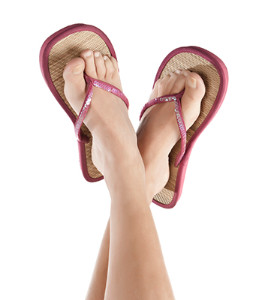 While flip-flops may be convenient to wear around the pool and locker rooms, they should not be worn for long periods of time. The only benefit that these shoes provide is that they can help protect you from infection, but they tend to do more harm than good for your feet. Typically, flip-flops fail to provide your feet with arch support, which may cause your natural foot arch to collapse. As a result, other parts of your body, such as your hip and back, may be disrupted. Nevertheless, the key to wearing flip-flops is moderation. It is crucial that you only wear these shoes for short periods of time in order to prevent long-term damage to your feet.
While flip-flops may be convenient to wear around the pool and locker rooms, they should not be worn for long periods of time. The only benefit that these shoes provide is that they can help protect you from infection, but they tend to do more harm than good for your feet. Typically, flip-flops fail to provide your feet with arch support, which may cause your natural foot arch to collapse. As a result, other parts of your body, such as your hip and back, may be disrupted. Nevertheless, the key to wearing flip-flops is moderation. It is crucial that you only wear these shoes for short periods of time in order to prevent long-term damage to your feet.
Flip-flops are not always the best choice of footwear. If you have any concerns about your feet or ankles, contact Harvey Jacobs, DPM from Quality Foot Care Center. Our doctor will assist you with all of your foot and ankle needs.
Flip-Flops and Feet
When the weather starts warming up, people enjoy wearing flip-flops. Flip-flops are comfortable, stylish, and easy to slip on and off; they're perfect for any summer beach goer. However, these shoes can cause harm to the feet.
How Can Flip-Flops Affect Me Long-Term?
- Ankle problems
- Hip problems
- Lower back problems
- Pain in the balls of the feet
- Problems with foot arches
- Changes in the way you walk
Are There Injuries Associated with Flip-Flops?
Yes. Since flip-flops are relatively weak and do not provide the same amount of support as sneakers, people who wear flip-flops regularly are more susceptible to injuries. On top of that, the open nature of the shoe makes your feet more prone to other problems, such as cuts and even infections. Common injuries and ailments include:
- Sprained ankles
- Blisters
- Infections
- Cuts and Scrapes
I like Wearing Flip-Flops. Are There Safe Alternatives?
When buying flip-flops, try to find ones that have sturdy soles and that are made of high-quality materials that will support for your feet. These flip-flops will cost more but will also last longer as a result.
If you have any questions please feel free to contact our office located in Somerset, NJ . We offer the newest diagnostic and treatment technologies for all your foot and ankle needs.
Why Ankle Pain Shouldn’t Be Ignored
 Baby boomers should be cautious about old ankle sprains coming back to plague them. These older Americans are finding that their old sprains are not only returning, but also causing more damage than they did before. This is why it is crucial that you do not ignore any ankle pain you may be experiencing, and to beware of the signs of an ankle sprain. Swelling is one of the most obvious trademarks of an ankle sprain that should not be ignored. If you have suffered a sprain in the past, you may not notice a decrease in your ankle’s strength while casually walking around. However, you may notice that your ankle is weaker while engaging in a more physical activity. If you are putting stress on a previously sprained ankle, you risk the potential of damaging your ligaments even further, which may result in pain.
Baby boomers should be cautious about old ankle sprains coming back to plague them. These older Americans are finding that their old sprains are not only returning, but also causing more damage than they did before. This is why it is crucial that you do not ignore any ankle pain you may be experiencing, and to beware of the signs of an ankle sprain. Swelling is one of the most obvious trademarks of an ankle sprain that should not be ignored. If you have suffered a sprain in the past, you may not notice a decrease in your ankle’s strength while casually walking around. However, you may notice that your ankle is weaker while engaging in a more physical activity. If you are putting stress on a previously sprained ankle, you risk the potential of damaging your ligaments even further, which may result in pain.
Ankle sprains are common but need immediate attention. If you need your feet checked, contact Harvey Jacobs, DPM from Quality Foot Care Center. Our doctor can provide the care you need to keep you pain-free and on your feet.
How Does an Ankle Sprain Occur?
Ankle sprains take place when the ligaments in your ankle are torn or stretched beyond their limits. There are multiple ways that the ankle can become injured, including twisting or rolling over onto your ankle, putting undue stress on it, or causing trauma to the ankle itself.
What Are the Symptoms?
- Mild to moderate bruising
- Limited mobility
- Swelling
- Discoloration of the skin (depending on severity)
Preventing a Sprain
- Wearing appropriate shoes for the occasion
- Stretching before exercises and sports
- Knowing your limits
Treatment of a Sprain
Treatment of a sprain depends on the severity. Many times, people are told to rest and remain off their feet completely, while others are given an air cast. If the sprain is very severe, surgery may be required.
If you have suffered an ankle sprain previously, you may want to consider additional support such as a brace and regular exercises to strengthen the ankle.
If you have any questions please feel free to contact our office located in Somerset, NJ . We offer the newest diagnostic and treatment technologies for all your foot and ankle needs.
The Dangers of Overuse Injuries
 Injuries are a common problem for athletes of all sports. It is important that you take preventative measures so that you can avoid encountering any injuries such as sore knees and sprained ankles. One of the most common causes of injuries for runners is overuse. Overuse injuries are the result of pushing your muscles, tendons, and bones past the limit they are used to. A tip to avoid overuse injuries is to ease your way into a new running routine so that you are not doing too much, too soon. Another helpful tip is to replace your sneakers after every 500 miles of use, since worn-out sneakers make you much more susceptible to injury.
Injuries are a common problem for athletes of all sports. It is important that you take preventative measures so that you can avoid encountering any injuries such as sore knees and sprained ankles. One of the most common causes of injuries for runners is overuse. Overuse injuries are the result of pushing your muscles, tendons, and bones past the limit they are used to. A tip to avoid overuse injuries is to ease your way into a new running routine so that you are not doing too much, too soon. Another helpful tip is to replace your sneakers after every 500 miles of use, since worn-out sneakers make you much more susceptible to injury.
Exercising your feet regularly with the proper foot wear is a great way to prevent injuries. If you have any concerns about your feet, contact Harvey Jacobs, DPM of Quality Foot Care Center. Our doctor will treat your foot and ankle needs.
How to Prevent Running Injuries
Many common running injuries are caused by overuse and overtraining. When the back of the kneecap starts wearing out and starts causing pain in your knee, this is commonly referred to as runner’s knee. Runner’s knee is a decrease in strength in your quadriceps and can occur if you’re not wearing properly fitted or supporting shoes. To prevent runner’s knee, focusing on hip strengthening is a good idea, as well as strengthening your quads to keep the kneecaps aligned.
What Are Some Causes of Running Injuries?
- One cause of a common running injury is called iliotibial band syndrome.
- Plantar fasciitis is also another common injury.
- Stress fractures can occur from overtraining, lack of calcium, or even your running style.
Best Ways to Prevent Running Injuries
- Wear footwear that fits properly and suits your running needs.
- Running shoes are the only protective gear that runners have to safeguard them from injury.
- Make a training schedule. Adding strengthening exercises as well as regular stretching can help keep you strong and limber and can lessen the possibility of injuries.
- Stretching keeps muscles limber; this will help you gain better flexibility.
If you have any questions please feel free to contact our office located in Somerset, NJ . We offer the newest diagnostic and treatment technologies for all your foot and ankle needs.
